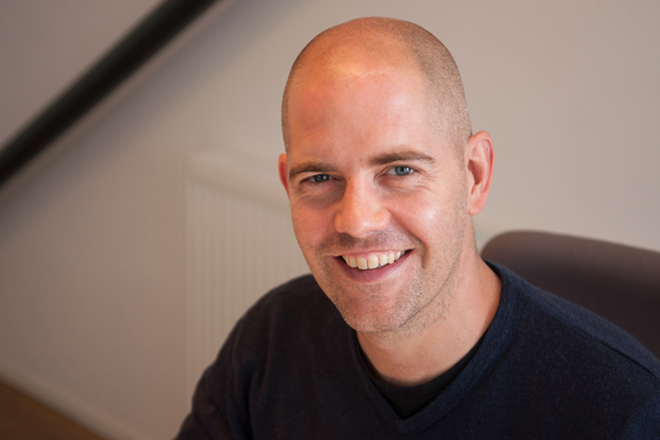With more than 75,000 fixtures specified to date around the globe, Remote Controlled Lighting (RCL) has featured in some of the world’s most prestigious projects, including hotel ballrooms, banqueting suites, art galleries, museums and store windows. RCL’s managing director, Alex Ruston, speaks with Hospitality Interiors about what makes the remote-controlled lighting specialist stand out from the crowd.
How did the concept for RCL come about?
RCL began as a solution to a common problem: aiming spotlights mounted on high ceilings is both difficult and time-consuming. In 1998, the banqueting staff at the Hilton hotel in London faced this problem. Lighting Design International, the designer working on the project, wanted to light a range of table layouts without having to focus the spotlights by hand.
What we came up with was a spotlight that could be aimed and dimmed simply and quickly using a hand-held remote controller. After the lights were installed in the hotel, it was quickly realised that the benefits of the system could be attractive to a much wider market, and RCL was born.
Why is it so important to get the lighting right in hospitality spaces?
Lighting is not only functional but also contributes enormously to the atmosphere of a space. It is very unlikely that you would want the same lighting levels or quality of light in the lobby, bar, restaurants, guest rooms, bathrooms, kitchens, offices, gym and car park. In some areas a warm light is important, in others you may want to create zones with lighting or use them to entice people into a bar or restaurant area. Lighting design is both an art and a science.
“RCL prides itself on tackling any job – big or small – and as a result we’ve worked on a wide variety of projects”
How does commercial lighting differ from residential?
The principal difference is that – other than switching on and off or dimming – it is unlikely that you will change the lighting frequently in a residential setting. In a commercial setting it may be necessary to alter the ambiant and task lighting throughout the day and night. In flexible spaces, such as ballrooms that are also used as dining rooms and for conferences, you are very likely to have to redirect and refocus the lighting for each use. You might have to change the layout of the tables in a dining room but still want to pin-spot them exactly, for example.
What makes RCL stand out from its competitors?
RCL is the only company in the world to specialise in the design and manufacture of high-quality remote controlled spotlights. We have focused entirely on producing movable lights that can be controlled quickly and easily by non-technical staff.
Our patented Select and Direct technology offers users the ability to take control of their lighting and adjust it to suit their individual requirements. RCL prides itself on tackling any job – big or small – and as a result we’ve worked on a wide variety of projects, many of which have required bespoke elements.
Which have been your favourite hospitality projects to date?
There are so many. We recently launched the Director DR8 MK2, and are very pleased that it has already been installed in the recently-refurbished Shangri-La Sydney, along with our fully-recessed luminaire, the Director DR7. Both models can be operated using our laser controller or the iPad-based system, iDirect, which we released last year.
Our luminaries have also been used in a number of projects short-listed for the 2014 Lighting Design Awards, including Isometric Lighting + Design’s scheme for Hakkasan Las Vegas. It is enormous and includes a nightclub area with triple-height ceilings where RCL’s DR8 LED spotlights create highly versatile lighting in the nightclub booths, providing mood lighting for guests and carefully directed task lighting when the bill arrives.
There are over 20,000 Swarovski crystals at the Crystal Ballroom at the Banyan Tree Club & Spa in Seoul. It’s an impressive location for meetings and celebrations, but the crystal structures presented the lighting designers with a problem: focusing spotlights by hand using mechanical lifts or scaffolding was not possible without disrupting the decorative features. The space needed a versatile lighting solution that could be easily adjusted with minimal fuss: remote controlled lighting.
How do you work with clients to ensure that projects meet the brief?
At RCL, we pride ourselves on producing high-quality luminaires at an affordable price. Our team of in-house designers and engineers are continually exploring ways to improve our product range, ensuring that our spotlights always offer the best value to our clients.
At RCL our clients are our business; because we offer a niche product, we rely on a lot of return custom. I’m pleased to say that we have a very loyal customer base, which continues to expand, and we always strive to meet their needs. This ranges from providing bespoke solutions for individual projects to an excellent after-sales care package.
Many of our spotlights that were installed when the company was formed 12 years ago are still in use today. At RCL we build products to last and this achievement reflects that.
“Lighting design is both an art and a science”
How do you hope the company will continue to grow?
There is no doubt that RCL will continue to innovate, both in the lights that we design and the systems used to control them. We have recently made a major investment in R&D, which will insure that RCL remains competitive in the future. Our policy of continuous product development will also see improvements made both to our current range of lights as well as new products.
Looking forward, we expect to see continued growth in developing regions such as India and the Americas as well as continued demand in Asia, where projects are expanding in size and complexity as more and more specifiers come to recognise the full potential of our technology.



